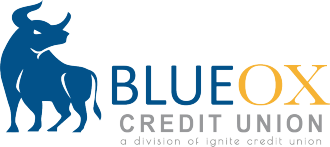know your mortgage forms: what you should understand about Good Faith and Loan Estimates

Applying for a mortgage to find your dream home can be an exciting yet long process. BlueOx Credit Union strives to simplify financing and servicing your home. However convenient our local, hometown superior service has made the mortgage process for you, it can still be challenging to understand some of the information in the standard documents.
When you're searching for a mortgage, finding the lowest interest rate may be your most diligent focus. However, it’s important to remember that there's more to consider with a mortgage than just a low-interest rate, including the terms and closing costs associated with each lender. You may have heard of the Good Faith Estimate form, which has historically been used to inform borrowers of the nuances. However, the federal government came to realize that most borrowers were not taking the time to shop around before choosing a mortgage lender because they didn’t know how to compare lending services.
In response to the shortage of knowledge among consumers when choosing a mortgage lender, the “Know Before You Owe” rule was introduced, helping people understand the differences between the various lending offers. As part of the initiative, the Consumer Financial Protection Bureau (CFPB) retired the Good Faith Estimate and replaced it with the Loan Estimate form. Although the federal mandate has made mortgage details more apparent, you should still understand the basic concepts behind these forms so you’re more prepared to read them.
what is a Good Faith Estimate?
The Good Faith Estimate (GFE) is a standard form the Real Estate Settlement Procedures Act required lenders to use to inform borrowers of mortgage terms. In October 2015, the Good Faith Estimate form was replaced but is still used (in conjunction with the Truth-in-Lending Disclosure and HUD-1 Settlement Statement) for reverse mortgages. The GFE also provides estimates of the fees to be paid at the closing of the mortgage and itemizes the payments you are required to make so that you're aware of what is expected. This also makes it easier to understand the lender and third-party fees.
Because GFEs are standardized, the government assumed consumers could use the form to compare the costs of various lenders and determine which lender to use when financing. However, it was discovered that these comparisons were not as easy for borrowers as expected.
why was the Good Faith Estimate replaced?
Although the intent of the GFE was to clarify consumer loan interest rates and closing costs, many found the information to be more confusing than helpful.
Borrowers have always been encouraged to shop around for mortgages, but the GFE and its precursors allowed lenders to choose the language they used to describe terms and fees. The inconsistent language used by lenders left borrowers scratching their heads. Without familiarity with the mortgage process, they couldn’t distinguish the real differences between loans.
In the interest of protecting consumers, the CFPB eliminated GFEs and replaced them with Loan Estimates. This change simplified the information and made it more user-friendly by consolidating four forms into two: the Loan Estimate and the Closing Disclosure.
what is a Loan Estimate?
Within three business days of submitting a mortgage application, your lender is now required to provide you with a three-page form known as the Loan Estimate.
The Loan Estimate does not offer you a stamp of approval or rejection when it comes to obtaining a loan. Rather, it presents you with the estimated loan terms, projected payments, and closing costs for your potential mortgage. Loan Estimates also provide you with insight into whether rates and payments can change and by how much.
Loan Estimates are more transparent than GFEs because they require lenders to use a universal format when presenting information about the terms and costs involved. This may sound like the GFE, but the real improvement comes with the fact that Loan Estimates also standardize the inclusions and wording of rates and costs by offering a table that is used universally.
The Loan Estimate form even includes a section that specifies which closing costs are fixed so you know which services you can shop around for. To help you select these services, lenders will provide a list of preferred service providers. With the differences between lenders more apparent, you’ll be more aware of the options and can make better-educated decisions when choosing the best lender and service providers for your circumstances.
fee tolerances
In addition to protecting you from surprise fees, Loan Estimates also guard you against last-minute changes. Because the costs listed in the form are only estimates, adjustments to fee amounts may occur. However, the law holds lenders responsible for providing you with estimates in good faith. To make sure lenders are held accountable, the fees disclosed on Loan Estimates are compared to the actual amount you pay at the point when you become legally obligated to a specific lender, otherwise known as consummation.
To ensure that you aren’t paying more than you should, the disclosure law sets tolerance levels for different fees. If the disparity between the amount estimated and the amount paid is too high, the lender must make up the difference.
Page two of the Loan Estimate details the closing costs. These costs are broken down into a couple of different categories: Loan Costs (origination charges, services you cannot shop for, and services you can shop for) and Other Costs (taxes and government recording fees, pre-paid fees, initial escrow payment, and other fees that the lender is aware of).
Each of these fees is subject to a different tolerance level. Fees that have zero tolerance cannot increase. If they increase by any amount, the lender is liable for the difference. The costs included in the zero-tolerance category are any fees that the lender has oversight of. Fees with zero tolerance include origination charges, services that you cannot shop for, and transfer taxes.
Fees in the 10% cumulative tolerance category are viewed as a whole. While these fees may increase by more than 10% individually, the sum total of these fees may not increase by more than 10%. Costs included in this tolerance category are recording fees and any third-party service fees that you can shop for (assuming you chose a provider from your lender’s preferred list).
The final category is for fees that have no tolerance. No tolerance fees are ones that you must pay in full regardless of how much they increase. These fees can change without restriction because they're costs that the lender has no control over. They fall under the Other Costs section of the Loan Estimate and include pre-paid fees (insurance premiums, pre-paid interest, and property taxes) and the initial escrow payment. Other fees that are included in this category are the costs of any services that you shopped for if you didn't choose a provider from the lender’s list.
what is a Closing Disclosure?
A Closing Disclosure is a five-page form that lenders are required to give borrowers before the loan closing. This form outlines the final terms and costs associated with your mortgage, as well as the amount of money you’ll need on hand at closing. The information on this form is presented in the same format and uses the same language as the Loan Estimate to improve the borrowers understanding. By simply reviewing the two forms next to each other, you’ll be readily able to compare the final details of your loan (Closing Disclosure) to the estimates that your lender provided (Loan Estimate).
Just as the Loan Estimate replaced the Good Faith Estimate, the Closing Disclosure replaced the HUD-1 Settlement Statement. Not only did the CFPB simplify the form, they also extended the timeframe you have to review it. While the HUD-1 Settlement Statement was given to borrowers on the day of closing, the Closing Disclosure must be provided to you at least three business days before you close on your loan. This three-day window allows time to review and ask questions and ensures that there is no confusion on closing day.
how does this change impact your mortgage?
By changing these forms, the CFPB has made the mortgage process easier and more accessible. As always, the more information you have, the more empowered you’ll be when choosing a lender and mortgage product appropriate for your situation.
Be sure to read your Loan Estimates carefully and ask your potential lenders any questions you have before you choose which loan and lender to proceed with. You also may find it helpful to review definitions of the terms present in these forms.
« Return to "BlueOx Blog"
